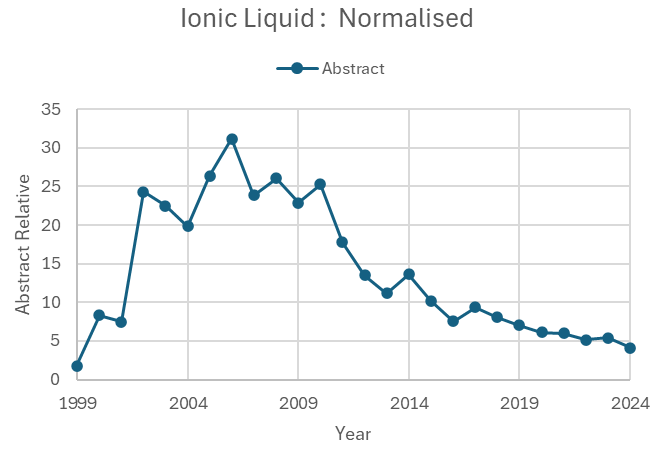25 years of Green Chemistry
For many years I have interacted with the green chemistry community and have been struck that the good intentions behind their work produced, at best, only modest outcomes. The opportunity of a keynote lecture to a green chemistry conference in 2019, gave me a chance to show (using Open Analyzer backed up by high-powered LCA) that there was little chance of their projects doing any significant good to the planet. While attendees could not refute the data, it was clear that they wished to continue with "business as usual", going against a core tenet of green chemistry that resources are limited and precious so should not be wasted.
6 years later I now have a big dataset which has allowed me to explore whether my pessimism about the green chemistry community is justified. You can download the data and my personal analysis to allow you to form your own assessment.
Checking the data
 During the 25th anniversary celebrations of the prestigious Green Chemistry journal I asked myself if it was possible to analyse 25 years of papers to assess the costs (money consumed, CO2 produced, opportunities lost) versus the benefits to the planet. This does not capture the whole of green chemistry, but it is reasonable to assume that such a flagship journal is a fair representation of the work of the community.
During the 25th anniversary celebrations of the prestigious Green Chemistry journal I asked myself if it was possible to analyse 25 years of papers to assess the costs (money consumed, CO2 produced, opportunities lost) versus the benefits to the planet. This does not capture the whole of green chemistry, but it is reasonable to assume that such a flagship journal is a fair representation of the work of the community.
Using Web of Science I was able to get a large data download (Titles, Abstracts, Authors, Pages, Citations ...) into Excel which, after some curation, could be analysed in multiple ways.
You can download the resulting GC-25.xlsx file and use it to perform your own analyses. The Excel has numerous graphs (here we see a normalised plot of papers on Ionic Liquids over the 25 years) and search functions set up for you to work with. Power users can readily create their own analyses using the core datasets.
I also assembled my own thoughts on the outcomes of all that work, which you can download as GC-25-Outcomes.pdf.
Like any individual, I have my biases and blindspots so this is only one person's view. But it confirms, to my satisfaction, that the impact on the world of 25 years of Green Chemistry is minimal when viewed against the many challenges the world faces. In particular, the world needs green chemistry that solves problems at scale (Gt-CO2/year), while the data suggests that the outcomes are in the kt scale, equivalent to a few seconds of global CO2 emissions.
By putting the data and my personal views in the public domain, the authors of the 11,000 papers, the editors of the journal, and the green community as a whole have the chance to put forward their own views. If the conclusion is that the Green Chemistry community has used precious resources wisely, that's good news. If, on the other hand, the community broadly agrees with much of the analysis, it can decide to continue with "business as usual", or to find ways to use limited resources more wisely, aimed at making changes at scale.

